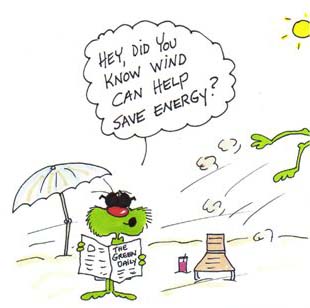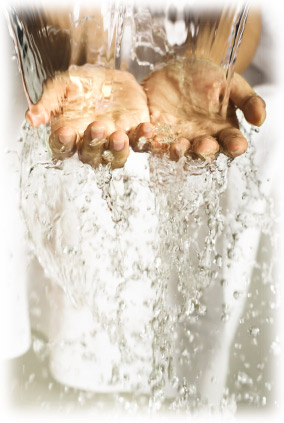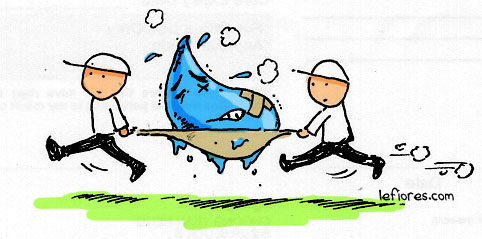How much does it cost to leave your TV on all day? What about turning your air conditioning 1 degree cooler? Which uses more power every month — your fridge or your dishwasher? Is your household more or less energy efficient than similar homes in your neighborhood? electricity
Our lack of knowledge about our own energy usage is a huge problem, but also a huge opportunity for us all to save money and fight global warming by reducing our power usage. Studies show that access to your household’s personal energy information is likely to save you between 5–15% on your monthly bill, and the potential impact of large numbers of people achieving similar efficiencies is even more exciting. For every six households that save 10% on electricity, for instance, we reduce carbon emissions as much as taking one conventional car off the road.
Data Sources
Our estimate of the impact of real-time energy feedback on carbon emissions is based on the following sources:
- Home electricity use: The U. S. Energy Information Administration estimated in 2001 that there were 107 million households in the United States using a total of 1140 terawatt-hours (TWh) per year. That gives an average of 10.6 megawatt-hours (MWh) per year per household.
- Carbon emissions from residential electricity: According to the U. S. Environmental Protection Agency, the National Average Emissions Rate for 2005 was 712 g CO2 per kilowatt-hour (kWh).
- Electricity saved with real-time feedback: There have been several studies of feedback’s effects on energy use. Sarah Darby’s review of the literature, The Effectiveness of Feedback on Energy Consumption (pdf) , estimates savings between 5 and 15% from direct feedback.
- Carbon emissions from cars: Again according to the EPA, a typical car is driven 12,000 miles per year, the average fuel economy of a passenger car is 23.9 miles per gallon, and a gallon of gasoline produces 8.8 kg of CO2.
Based on these figures, we get an average of 7.5 tonnes of CO2 emitted per year per household, and 4.5 tonnes of CO2 emitted per year per conventional car. So, 10% energy savings for 6 households would reduce carbon emissions by about the same amount as taking one conventional car off the road.
Energy Saving Tips
Here are some more resources to help you find ways to reduce your energy use.
Heating and Cooling:
- Weatherstrip and caulk your windows and doors
- Seal and insulate your home
- Consider installing a Geothermal Heat Pump to heat and cool your home, save up to 70% on your heating and cooling costs.
- Clean your furnace’s filter monthly
- Consider buying an ENERGY STAR furnace or air conditioner, insulating and sealing ducts and relocating heating and air conditioning vents.
- Cover your hot water heater with an insulation blanket
- Consider installing energy efficient windows or storm windows
Saving Water:
- Reduce the temperature of your hot water heater to 120F or less (or until using little to no cold water in the bath/shower)
- Install a low flow shower head (there are some nice ones out now-a-days)
- Solar hot water heaters can reduce your hot water heating bill
- Wash clothes in cold water
- Run full loads in the washing machine and dishwasher
- If available, use the energy savings settings on your dishwasher and washing machine
- Consider air drying your clothes. saves energy, money and keeps your clothes lasting longer.
- Take a shorter shower
Computing Equipment:
- Learn how to set power management on your computer
- Download the Google Desktop Power Management Gadget
- Buy a Climate Savers certified energy efficient computer
- Plug your computer peripherals (printer, scanner, speakers, fax machine) into a powerstrip and power down when not in use.
Electronics and Home Appliances:
- Turn down the brightness on your TV and computer monitor
- Look for and purchase ENERGY STAR appliances and electronics
- Consider replacing that old, second refrigerator in the basement – This calculator determines how much energy your refrigerator is using
- Plug home electronics into a powerstrip and turn off when not in use. Or unplug appliances that you rarely use – when was the last time you used that VCR?
- Don’t keep your refrigerator and freezer too cold. Set temperature between 36-38 degrees F and freezers at 0-5 degrees.
Other Energy-saving Tips:
- Grist: 7 ways to cut your energy use
- Alliance to Save Energy: No-Cost Low-Cost Tips for Saving Money & Energy
- Department of Energy: Additional No-Cost / Low Cost Tips to Save Energy
- Carbon footprint calculator
- ACEEE: Consumer Guide to Home Energy Savings
- Home Energy Savers: Calculate your home’s energy footprint
- Get a home energy audit







Recent Comments